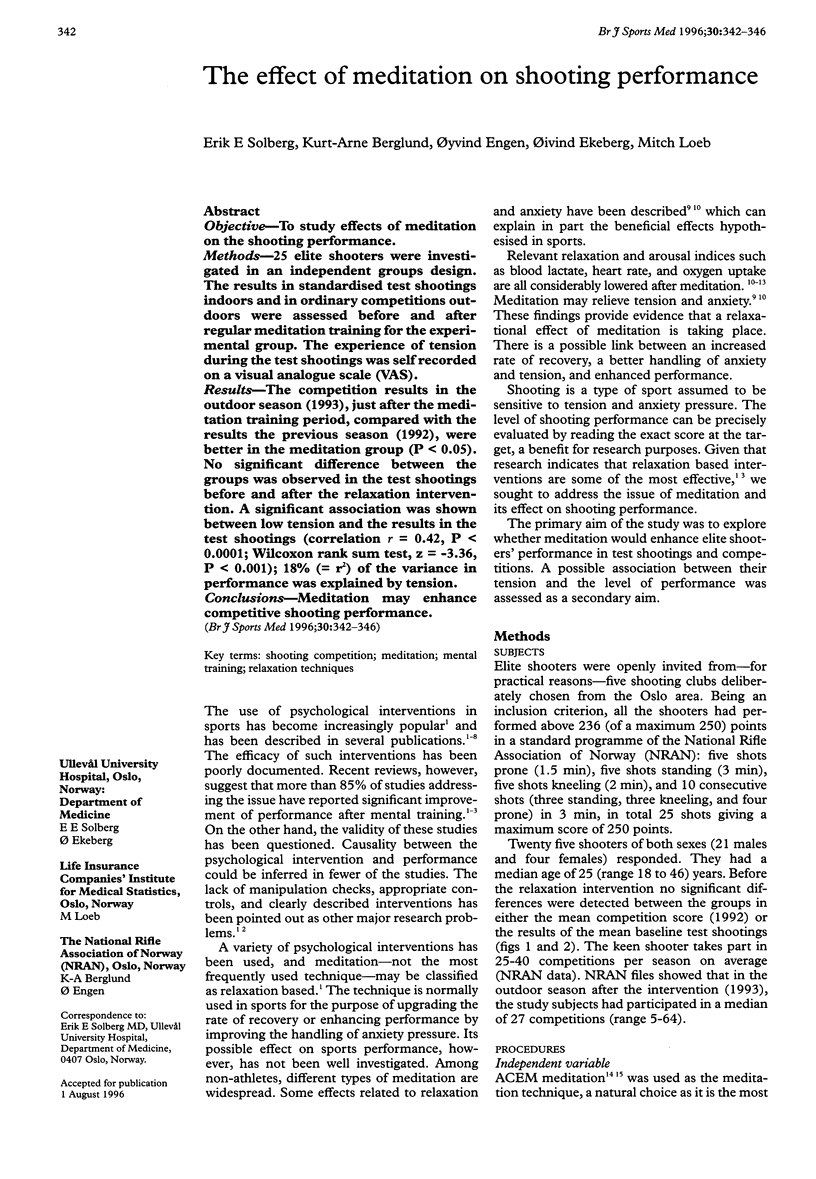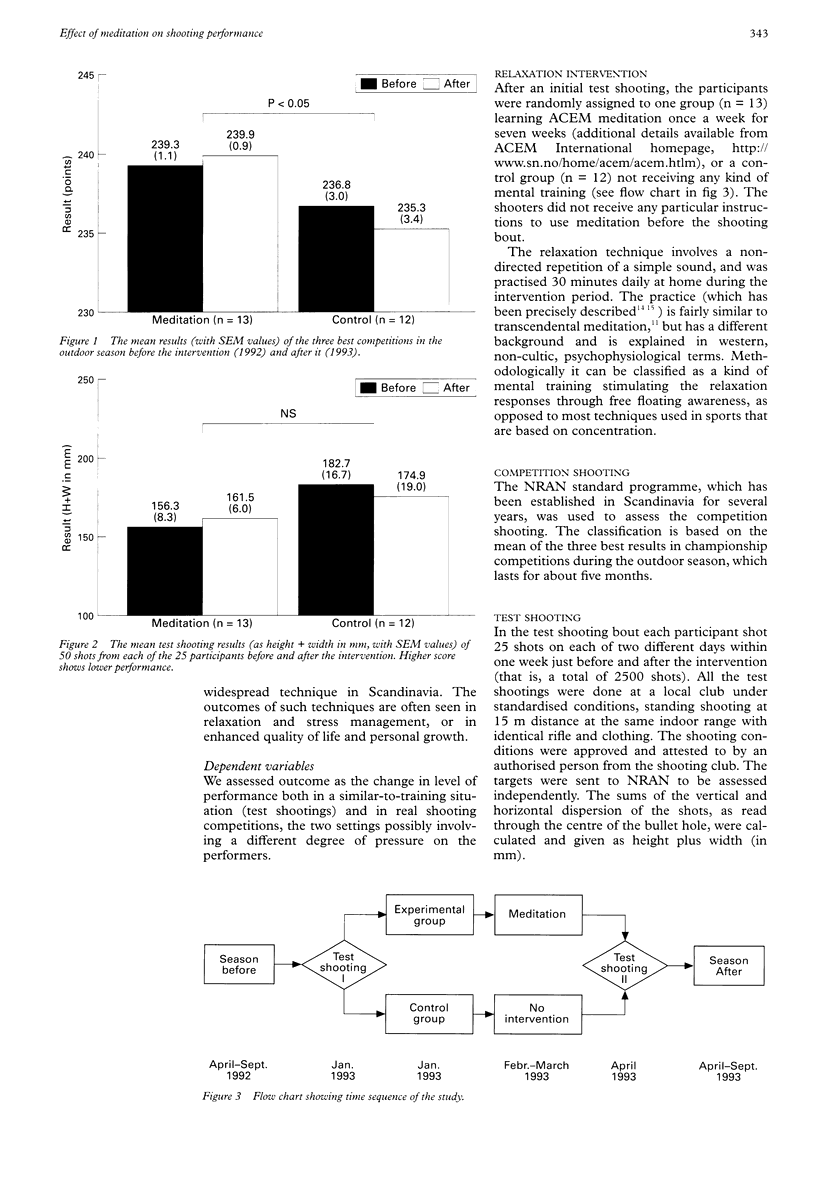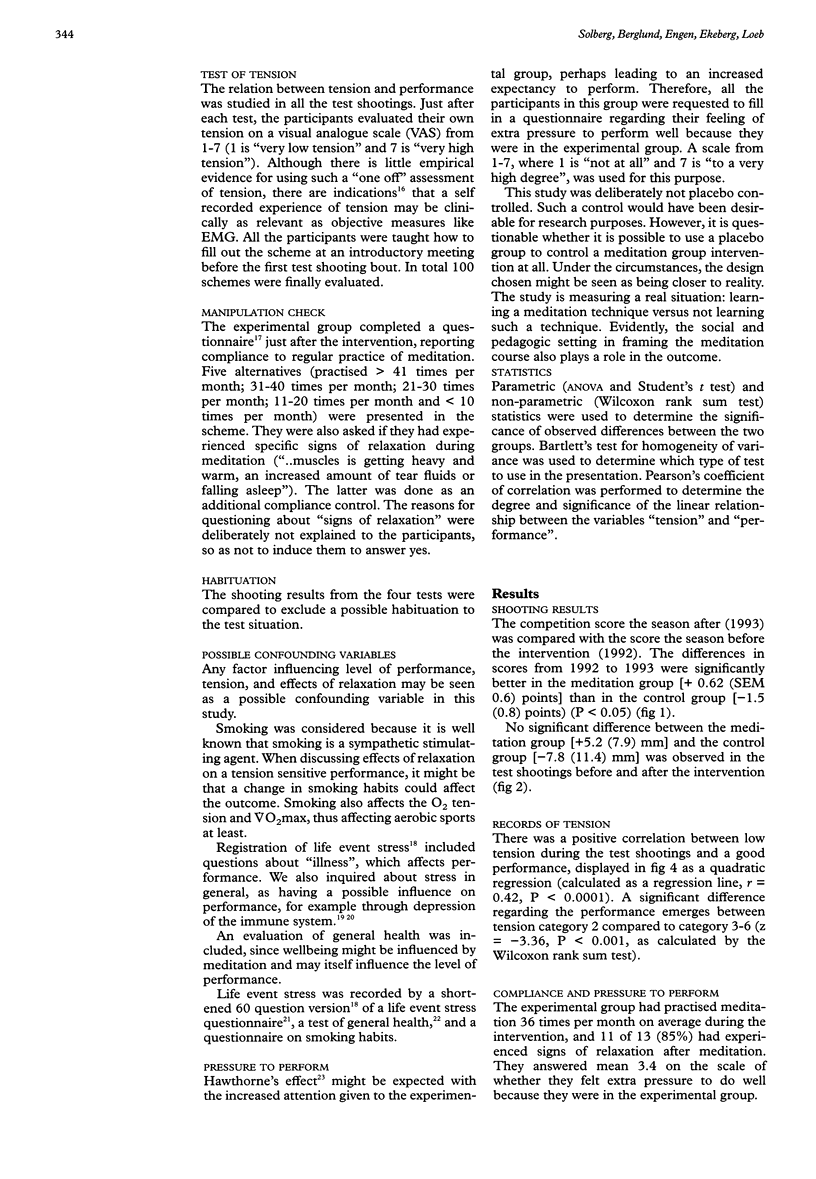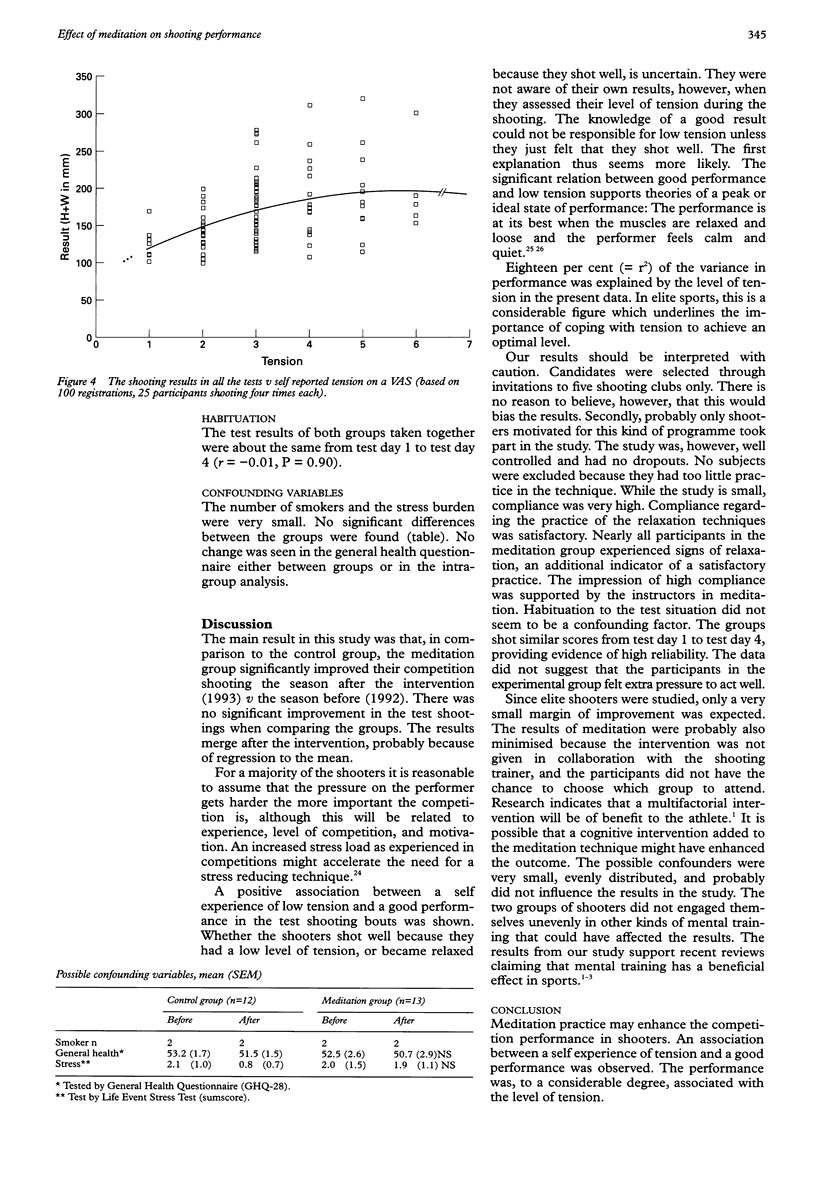Abstract
OBJECTIVE: To study effects of meditation on the shooting performance. METHODS: 25 elite shooters were investigated in an independent groups design. The results in standardised test shootings indoors and in ordinary competitions outdoors were assessed before and after regular meditation training for the experimental group. The experience of tension during the test shootings was self recorded on a visual analogue scale (VAS). RESULTS: The competition results in the outdoor season (1993), just after the meditation training period, compared with the results the previous season (1992), were better in the meditation group (P < 0.05). No significant difference between the groups was observed in the test shootings before and after the relaxation intervention. A significant association was shown between low tension and the results in the test shootings (correlation r = 0.42, P < 0.0001; Wilcoxon rank sum test, z = -3.36, P < 0.001); 18% (= r2) of the variance in performance was explained by tension. CONCLUSIONS: Meditation may enhance competitive shooting performance.
Full text
PDF




Selected References
These references are in PubMed. This may not be the complete list of references from this article.
- Ader R., Cohen N., Felten D. Psychoneuroimmunology: interactions between the nervous system and the immune system. Lancet. 1995 Jan 14;345(8942):99–103. doi: 10.1016/s0140-6736(95)90066-7. [DOI] [PubMed] [Google Scholar]
- Holmes T. H., Rahe R. H. The Social Readjustment Rating Scale. J Psychosom Res. 1967 Aug;11(2):213–218. doi: 10.1016/0022-3999(67)90010-4. [DOI] [PubMed] [Google Scholar]
- Krenz E. W. Hypnosis versus autogenic training: a comparison. Am J Clin Hypn. 1986 Apr;28(4):209–213. doi: 10.1080/00029157.1986.10402655. [DOI] [PubMed] [Google Scholar]
- Margaria R. The sources of muscular energy. Sci Am. 1972 Mar;226(3):84–91. doi: 10.1038/scientificamerican0372-84. [DOI] [PubMed] [Google Scholar]
- Shapiro D. H., Jr Overview: clinical and physiological comparison of meditation with other self-control strategies. Am J Psychiatry. 1982 Mar;139(3):267–274. doi: 10.1176/ajp.139.3.267. [DOI] [PubMed] [Google Scholar]
- Solberg E. E., Halvorsen R., Sundgot-Borgen J., Ingjer F., Holen A. Meditation: a modulator of the immune response to physical stress? A brief report. Br J Sports Med. 1995 Dec;29(4):255–257. doi: 10.1136/bjsm.29.4.255. [DOI] [PMC free article] [PubMed] [Google Scholar]
- Vealey R. S. Current status and prominent issues in sport psychology interventions. Med Sci Sports Exerc. 1994 Apr;26(4):495–502. [PubMed] [Google Scholar]
- Wallace R. K., Benson H., Wilson A. F. A wakeful hypometabolic physiologic state. Am J Physiol. 1971 Sep;221(3):795–799. doi: 10.1152/ajplegacy.1971.221.3.795. [DOI] [PubMed] [Google Scholar]
- Wallace R. K. Physiological effects of transcendental meditation. Science. 1970 Mar 27;167(3926):1751–1754. doi: 10.1126/science.167.3926.1751. [DOI] [PubMed] [Google Scholar]
- Weinberg R. S., Comar W. The effectiveness of psychological interventions in competitive sport. Sports Med. 1994 Dec;18(6):406–418. doi: 10.2165/00007256-199418060-00005. [DOI] [PubMed] [Google Scholar]


